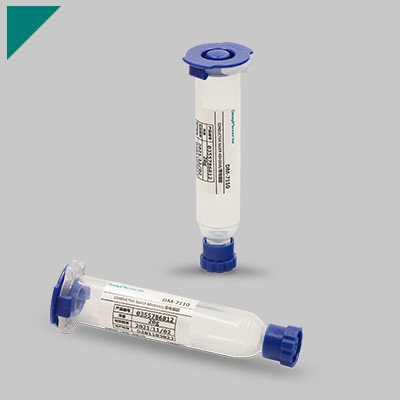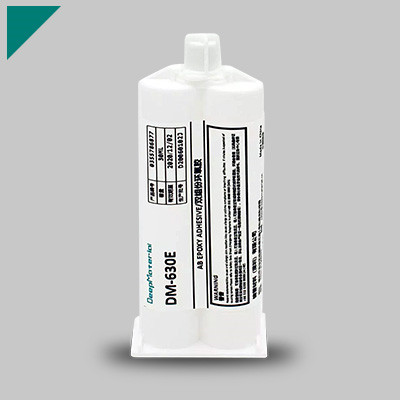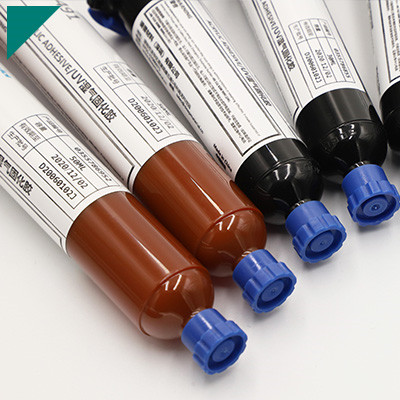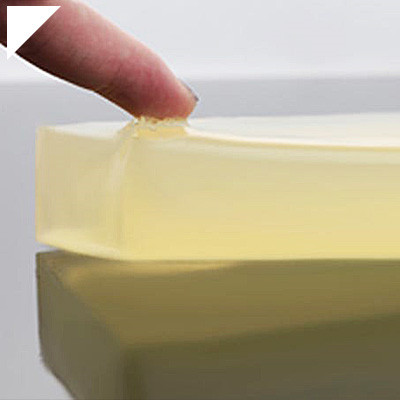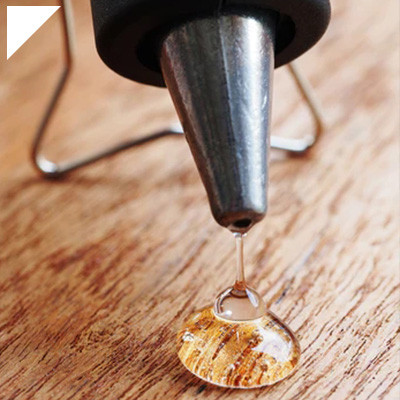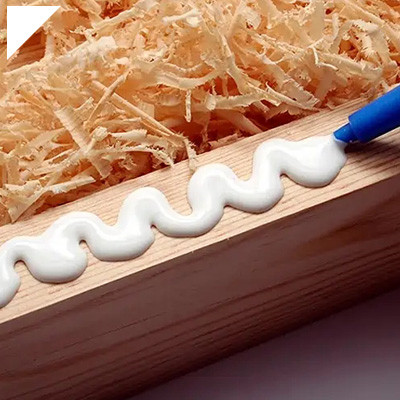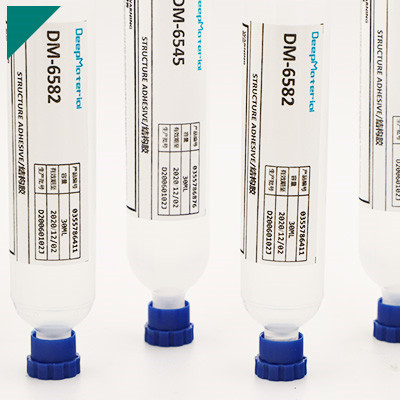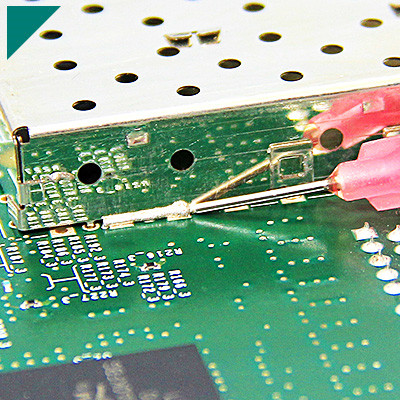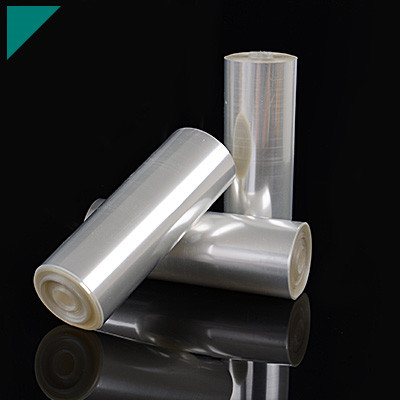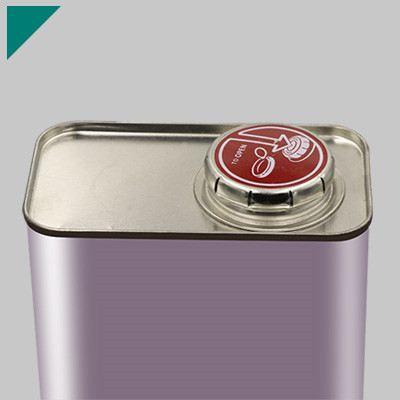Home > Potting Compound > Waterproof Potting Compound
Waterproof Potting Compound

In the realm of electronics and manufacturing, the quest for durability and reliability is perpetual. Waterproof potting compounds emerge as a crucial solution, offering protection against moisture, chemicals, and mechanical stress. In this blog post, we delve into the depths of waterproof potting compounds, exploring their composition, applications, benefits, and more.
Table of Contents
ToggleWhat are waterproof potting compounds made of?
Waterproof potting compounds are essential materials used across various industries to protect electronic components from moisture, chemicals, and environmental damage. At the heart of these compounds are polymer resins, which are the primary binding agents. Epoxy, polyurethane, and silicone resins are commonly employed for their unique properties. Epoxy resins excel in adhesion and chemical resistance, making them suitable for harsh environments.
Meanwhile, polyurethane resins offer flexibility and impact resistance, which is ideal for applications subject to vibration and thermal cycling. Silicone resins, known for their exceptional waterproofing capabilities and ability to withstand extreme temperatures, find use in outdoor and high-temperature settings.
In addition to polymer resins, waterproof potting compounds often incorporate fillers and reinforcements. These materials serve to enhance mechanical properties while reducing costs. Fillers like silica, glass beads, and clay improve thermal conductivity, dimensional stability, and hardness. Reinforcements such as fiberglass or carbon fibers bolster strength and stiffness, ensuring the compound’s durability.
Moreover, additives play a crucial role in fine-tuning the properties of waterproof potting compounds. Antioxidants and UV stabilizers are commonly added to prevent degradation caused by exposure to oxygen and sunlight, thus extending the compound’s lifespan. Flame retardants enhance fire resistance, ensuring compliance with safety regulations. Thickeners and rheology modifiers control viscosity and flow characteristics, facilitating ease of application and proper encapsulation of electronic components.
During the formulation process, solvents and catalysts are employed to achieve the desired properties of waterproof potting compounds. Solvents aid in dissolving and dispersing resin components, facilitating mixing and homogeneity. Catalysts initiate the polymerization reaction, crosslinking resin molecules and forming a solid, waterproof encapsulation.
How do waterproof potting compounds provide protection against moisture?
Water damage can wreak havoc on circuitry, leading to malfunctions, corrosion, and even complete failure. Enter waterproof potting compounds, the unsung heroes of electronic insulation. These compounds form a protective barrier around sensitive components, shielding them from the perils of moisture infiltration. But how exactly do waterproof potting compounds provide such robust protection? Let’s delve deeper into their mechanisms:
Encapsulation:
- By completely encasing electrical components, waterproof potting solutions provide a physical barrier that keeps moisture from getting to sensitive locations.
- This encapsulation is achieved through a process where the compound is poured or injected around the components and then allowed to cure, forming a solid protective layer.
Chemical Resistance:
- These compounds are formulated to resist the effects of water and other liquids, ensuring long-term protection even in harsh environments.
- Chemical additives in the compounds repel water molecules, preventing them from penetrating the encapsulated area and causing damage.
Flexibility:
- Since many waterproof potting compounds are flexible, they may adjust to temperature changes by expanding and contracting without losing their protective qualities.
- This flexibility ensures that the encapsulated components remain shielded even under mechanical stress or movement conditions.
Thermal Conductivity:
- Despite their protective nature, waterproof potting compounds often maintain good thermal conductivity, ensuring that heat generated by electronic components can still be effectively dissipated.
- This feature is crucial for preventing overheating and maintaining optimal performance of the encapsulated devices.
Application Versatility:
- Waterproof potting compounds come in various formulations to suit different applications and requirements.
- Whether for outdoor electronics exposed to rain and humidity or submerged components in underwater equipment, a suitable compound is available.
What types of chemicals can waterproof potting compounds resist?
Electronics are becoming more pervasive in our lives, from intricate circuitry in smartphones to complex systems in industrial machinery. Preserving these electronic components against environmental elements, including moisture, dust, and chemicals, is essential to their durability and dependability. One crucial solution to safeguard electronic assemblies is using waterproof potting compounds. These compounds provide a protective barrier, shielding delicate electronics from the harsh elements they may encounter.
Resisting the Elements: Chemicals Waterproof Potting Compounds Can Defend Against
Waterproof potting compounds are engineered to withstand various environmental challenges, making them indispensable for electronic applications in diverse settings. Here are some of the types of chemicals these compounds can resist:
- Water:The most apparent threat that water ingress can lead to corrosion, short circuits, and malfunctioning of electronic components. Waterproof potting compounds create an impenetrable barrier, preventing water from seeping into sensitive areas.
- Moisture:Beyond direct exposure to water, electronic devices often face high-humidity environments. Moisture can condense on circuitry, leading to malfunctions or even catastrophic failure. Waterproof potting compounds effectively seal out moisture, maintaining the integrity of the electronics.
- Chemicals:In industrial settings, electronic equipment may come into contact with various chemicals, including solvents, acids, and bases. These substances can corrode unprotected components, compromising performance and safety. Waterproof potting compounds provide chemical resistance, preserving electronics’ functionality even in harsh chemical environments.
- Dust and Particulates:Dust, dirt, and other particulates can infiltrate electronic devices, causing overheating and reducing efficiency. Waterproof potting compounds form a barrier that prevents the ingress of dust and particulates, ensuring reliable operation even in dusty conditions.
- UV Exposure:Outdoor electronics are exposed to sun ultraviolet (UV) radiation, which can degrade unprotected materials over time. Waterproof potting compounds can include UV stabilizers to resist the damaging effects of prolonged sun exposure, extending the lifespan of outdoor electronic devices.
Can waterproof potting compounds withstand mechanical stress?
Waterproof potting compounds protect electronic components from environmental factors like moisture, dust, and chemicals. These compounds provide insulation and safeguard delicate electronics from adverse conditions. However, a pertinent question arises: can waterproof potting compounds withstand mechanical stress?
In essence, the effectiveness of waterproof potting compounds in withstanding mechanical stress largely depends on their composition, application, and the degree of stress they encounter. Potting compounds are typically made from epoxy resins, silicones, polyurethanes, and acrylics. Each material possesses different mechanical properties, influencing its ability to withstand stress.
Because of their superior mechanical strength and adhesive qualities, epoxy resins are widely used in potting compounds. They can endure moderate mechanical stress without compromising the integrity of the encapsulated electronics. Conversely, silicones offer flexibility and good thermal stability but may need to be more resilient to high mechanical stress.
Polyurethanes balance mechanical strength and flexibility, making them suitable for applications with anticipated moderate stress. While offering good moisture resistance, acrylics may lack the mechanical robustness needed to withstand significant stress.
The application method also affects the mechanical integrity of potting compounds. Proper curing and bonding to the substrate are crucial for ensuring resistance to mechanical stress. Inadequate curing or improper application can weaken the bond between the compound and the electronics, making them more susceptible to damage.
Furthermore, the mechanical stress that an electronic gadget may experience is primarily determined by its design and planned use. Devices subjected to vibrations, shock, or constant movement require potting compounds with higher mechanical strength. Conversely, devices in static environments may tolerate lower levels of mechanical stress.
In real-world scenarios, waterproof potting compounds are often subjected to environmental and mechanical stresses. For instance, outdoor electronic devices may experience temperature variations, moisture ingress, and physical impacts. In such cases, potting compounds must be carefully selected to ensure they can withstand the anticipated stresses without compromising the electronics’ functionality.
What are the common applications of waterproof potting compounds?
Waterproof potting compounds are crucial in various industries where protection against moisture, chemicals, and environmental factors is paramount. These compounds are formulated to encapsulate electronic components and devices, providing insulation and safeguarding them from potential damage. Let’s delve into some typical applications where waterproof potting compounds are indispensable:
Electronics Industry:
- Waterproof potting compounds are widely used in electronics to shield delicate components from dust, moisture, and other impurities.
- They ensure the longevity and reliability of electronic devices by forming a protective barrier around circuit boards, connectors, and other vulnerable parts.
- Applications include encapsulating sensors, LED modules, control units, and power supplies in various electronic devices ranging from consumer electronics to industrial machinery.
Automotive Sector:
- In the automotive industry, waterproof potting compounds are used in components exposed to harsh environments, such as under-the-hood electronics, sensors, and lighting systems.
- These compounds help prevent corrosion, electrical shorts, and malfunctions caused by water ingress or chemical exposure, enhancing the durability and performance of automotive electronics.
Aerospace and Defense:
- Waterproof potting compounds are crucial in aerospace and defense applications where electronics must withstand extreme conditions, including high altitudes, temperature variations, and chemical exposure.
- They are used to pot electronic assemblies in avionics systems, radar equipment, communication devices, and missile guidance systems to ensure reliability and mission success.
Renewable Energy:
- Waterproof potting compounds protect electronic components in solar inverters, wind turbines, and battery storage systems in the renewable energy sector.
- These compounds help maintain the efficiency and reliability of renewable energy infrastructure by shielding critical electronics from moisture, UV radiation, and temperature fluctuations.
Marine and Offshore Applications:
- Waterproof potting compounds are employed in marine and offshore environments to protect electronic equipment installed on ships, offshore platforms, and underwater devices.
- They provide corrosion resistance and water-tight sealing, enabling electronics to operate reliably in challenging marine conditions.
Are waterproof potting compounds suitable for outdoor use?
Before addressing their suitability for outdoor use, one must grasp the fundamentals of waterproof potting compounds. These compounds are specially formulated resins that encapsulate electronic components, creating a protective barrier that shields them from external elements. Their composition typically includes polymers, fillers, and additives engineered to provide exceptional resistance to water ingress and environmental stressors.
- Enhanced Environmental Resilience: One key attribute that makes waterproof potting compounds suitable for outdoor use is their enhanced environmental resilience. These compounds exhibit superior resistance to moisture, UV radiation, temperature fluctuations, and mechanical impacts, making them well-suited for enduring the rigors of outdoor environments.
- Protection Against Moisture: Moisture ingress poses a significant threat to the functionality and longevity of electronic devices, particularly in outdoor settings where exposure to rain, humidity, and dew is prevalent. Waterproof potting compounds seal electronic components, preventing water from seeping into critical areas and causing corrosion, short circuits, or electrical malfunctions.
- UV Stability: Exposure to ultraviolet (UV) radiation can degrade materials over time, leading to discoloration, embrittlement, and deterioration of electronic components. Waterproof potting compounds are formulated to exhibit UV stability, ensuring that they maintain their integrity and protective properties even when exposed to prolonged sunlight. Thus, they safeguard electronic devices from UV-induced damage.
- Durability in Harsh Conditions: Outdoor environments can subject electronic devices to harsh conditions, including extreme temperatures, high humidity, salt spray, and pollutants. Waterproof potting compounds excel in such situations, offering durability and long-term protection against environmental stressors, extending electronic components’ lifespan, and reducing the risk of premature failure.
- Versatility Across Applications: Waterproof potting compounds have extensive applications across diverse outdoor settings, from outdoor lighting fixtures and surveillance cameras to renewable energy systems and automotive electronics. Their versatility and ability to provide reliable protection in demanding environments make them indispensable for ensuring the robust performance and longevity of outdoor electronic devices.
How do waterproof potting compounds enhance the lifespan of electronic components?
Modern technology is built on electronic components, which drive everything from industrial machinery to cell phones. However, their longevity can be compromised by environmental factors such as moisture, dust, and temperature fluctuations. Enter waterproof potting compounds, a vital solution in extending the lifespan of electronic components. Let’s delve into how these compounds work their magic.
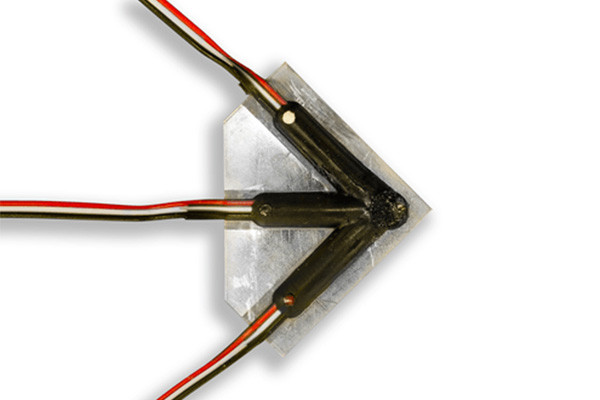
Encapsulation Shield:
Waterproof potting compounds act as a protective shield by encapsulating electronic components. This barrier prevents moisture, dust, and other contaminants from infiltrating sensitive areas, safeguarding against corrosion, short circuits, and electrical malfunctions that compromise performance and lifespan.
Moisture Resistance:
Moisture is a significant adversary for electronic components, leading to rust, oxidation, and degradation of electrical connections. Waterproof potting compounds excel in repelling moisture, creating a sealed environment that keeps internal components dry and corrosion-free, significantly prolonging their operational lifespan.
Thermal Management:
In addition to moisture protection, waterproof potting compounds aid in thermal management. They efficiently dissipate heat generated by electronic components, preventing overheating and thermal stress that can degrade performance and shorten lifespan. By maintaining optimal operating temperatures, these compounds contribute to the longevity of electronic devices.
Chemical Resistance:
Specific environments expose electronic components to chemicals that can corrode or degrade materials over time. Waterproof potting compounds offer chemical resistance, shielding components from acids, solvents, oils, and other corrosive substances. This resilience ensures that electronic devices remain functional and reliable even in chemically aggressive settings, extending their lifespan.
Mechanical Protection:
External forces, such as hits, vibrations, and shocks, can compromise the integrity of electronic components, causing premature failure. Waterproof potting compounds provide mechanical protection by encapsulating components and dampening vibrations, thereby reducing the risk of physical damage and prolonging the lifespan of electronic devices.
UV Stability:
Exposure to ultraviolet (UV) radiation can degrade materials and cause discoloration, embrittlement, and deterioration of electronic components. Waterproof potting compounds are formulated to exhibit UV stability, ensuring they maintain their integrity and protective properties even when sunlight exposes them. This UV resistance preserves the lifespan of electronic devices, especially those deployed in outdoor or sun-exposed environments.
Long-Term Reliability:
By offering a comprehensive suite of protective features—including moisture resistance, thermal management, chemical resistance, mechanical protection, and UV stability—waterproof potting compounds contribute to the long-term reliability of electronic components. This reliability translates into extended operational lifespans, reduced maintenance costs, and enhanced performance across various industries and applications.
Can waterproof potting compounds be customized for specific applications?
Waterproof potting compounds are essential in various industries where electronic components require protection from moisture, chemicals, and other environmental factors. These compounds offer a robust solution for sealing and insulating delicate electronics, ensuring their longevity and reliability. But can waterproof potting compounds be customized for specific applications? Let’s delve into this question.
Understanding Waterproof Potting Compounds
Waterproof potting compounds are materials used to encapsulate electronic components, protecting against moisture, dust, vibrations, and other external influences.
- They typically consist of polymers, resins, fillers, and additives formulated to achieve specific properties such as flexibility, thermal conductivity, and chemical resistance.
Customization for Specific Applications
Waterproof potting compounds can be customized to meet the unique requirements of different applications. Here’s how:
Tailored Formulations
- Manufacturers can adjust the formulation of potting compounds to optimize properties such as flexibility, hardness, and thermal conductivity based on the application’s needs.
- For instance, applications subjected to extreme temperatures may require compounds with higher thermal conductivity to dissipate heat effectively.
Environmental Compatibility
- Depending on the operating environment, such as exposure to harsh chemicals or UV radiation, potting compounds can be customized to enhance resistance against specific environmental factors.
- This customization ensures longevity and reliability even in challenging conditions, extending the lifespan of electronic devices.
Adhesion and Bonding
- A strong bond between the encapsulant and the components is ensured by the ability of customized potting compounds to stick to various substrates, such as metals, plastics, and ceramics.
- Enhanced adhesion prevents delamination and provides robust protection against moisture ingress.
Application-Specific Testing
- Manufacturers conduct rigorous testing to validate the performance of customized potting compounds under simulated operating conditions.
- This testing ensures that the compound meets the specific application requirements, such as waterproofing, thermal management, and electrical insulation.
Advantages of Customization
Customizing waterproof potting compounds offers several advantages:
- Optimized Performance:Tailoring the formulation enhances the compound’s performance and reliability in specific applications.
- Cost Efficiency:Customization prevents over-engineering by providing the required properties and optimizing material usage and cost.
- Extended Lifespan:Enhanced protection against environmental factors prolongs the lifespan of electronic devices, reducing maintenance and replacement costs.
Are there different curing methods for waterproof potting compounds?
Waterproof potting compounds are materials used to encapsulate electronic components, providing insulation and protection against moisture, chemicals, and mechanical stress. They come in various forms, including epoxies, silicones, and polyurethanes, each offering unique properties suited to different applications.
The Importance of Curing
Curing is when a potting compound solidifies and attains its final properties. Proper curing is crucial for ensuring the effectiveness and longevity of the encapsulation. It enhances the compound’s mechanical strength and improves its resistance to environmental factors, including water.
Different Curing Methods
Room Temperature Curing:
This method allows the potting compound to cure at ambient temperatures, typically 20°C to 25°C.
- Room temperature curing is convenient and requires no specialized equipment.
- It is suitable for applications where time is not critical and controlled curing conditions are available.
Heat Curing:
Heat curing involves exposing the potting compound to elevated temperatures to accelerate the curing process.
- The precise substance being utilized and the desired qualities determine the temperature and duration.
- Heat curing can significantly reduce curing time, making it ideal for high-volume production environments.
Moisture Curing:
- Some potting compounds cure in the presence of moisture in the air, a process known as moisture curing.
- This method eliminates additional curing agents or heat, simplifying the encapsulation process.
- Moisture curing is advantageous for applications where heat-sensitive components are involved or where controlled heating is impractical.
Factors Influencing Curing Method Selection
- Application Requirements:The specific performance requirements of the application, such as curing time and final properties, influence the choice of the curing method.
- Production Environment:The best curing procedure is primarily determined by the infrastructure and equipment available in the manufacturing environment.
- Component Sensitivity:Heat-sensitive components may require curing methods that minimize exposure to high temperatures.
What factors should be considered when selecting a waterproof potting compound?
Waterproof potting compounds protect electronic components from moisture, dust, and other environmental factors. Selecting the appropriate compound is essential to ensure the longevity and reliability of electronic devices. Here are some factors to consider when choosing a waterproof potting compound:
- Application Environment: Understand the specific environmental conditions to which the electronic device will be exposed. Consider variables like humidity, temperature swings, and chemical or solvent exposure.
- Waterproofing Properties: Look for potting compounds with high waterproofing capabilities to safeguard electronics from moisture ingress. Ensure the compound provides effective sealing to prevent water penetration, even under challenging conditions.
- Chemical Compatibility: Assess the compatibility of the potting compound with various materials used in the electronic assembly, including circuit boards, components, and housing materials. Ensure the compound does not react adversely with these materials, which could compromise device performance.
- Temperature Resistance: Evaluate the temperature range over which the potting compound remains stable and maintains its protective properties. Choose a compound with a suitable temperature resistance that matches the operational requirements of the electronic device.
- Flexibility vs. Rigidity:Consider whether flexibility or rigidity suits the application. Flexible potting compounds can absorb mechanical stresses and vibrations, offering enhanced protection for delicate components. In contrast, rigid compounds provide robust encapsulation for greater structural integrity.
- Curing Time and Process: Assess the potting compound’s curing time and process, considering the electronic device’s production requirements and assembly process. Opt for compounds that offer quick curing times without compromising on performance.
- Adhesion Properties:Ensure the potting compound adheres well to the surfaces of the electronic components and substrate to form a durable bond. Good adhesion is essential for maintaining the integrity of the encapsulation and preventing delamination over time.
- Thermal Conductivity: Determine the potting compound’s thermal conductivity, mainly if the electronic gadget produces a lot of heat as it operates. A compound with adequate thermal conductivity helps dissipate heat efficiently, preventing overheating and ensuring optimal performance.
How do waterproof potting compounds compare to other sealing methods?
Waterproof potting compounds stand as stalwart guardians against moisture, dust, and other environmental adversaries for electronic components. They provide a robust shield, ensuring the longevity and reliability of sensitive electronics in diverse conditions. Yet, a question often arises: How do waterproof potting compounds compare to other sealing methods?
Traditional sealing methods, such as gaskets, seals, and conformal coatings, have long been employed to protect electronic assemblies. While these methods offer some degree of protection, they may fall short in certain aspects compared to waterproof potting compounds.
Gaskets and seals, typically rubber or silicone, create a physical barrier between electronic components and the external environment. While effective in preventing moisture ingress, they may not provide sufficient protection against dust and contaminants. Moreover, their effectiveness can diminish due to wear and tear or improper installation.
Conformal coatings, applied in thin layers over electronic assemblies, offer protection against moisture, chemicals, and corrosion. However, they may not adequately protect against mechanical stress or physical impacts, and delicate components may remain vulnerable to damage, especially in rugged or high-vibration environments.
In contrast, waterproof potting compounds encapsulate electronic assemblies entirely, forming a durable and waterproof barrier. They fill voids and crevices, sealing components from all angles and providing comprehensive protection against moisture, dust, and mechanical stress. This encapsulation safeguards the electronics and enhances thermal conductivity and electrical insulation.
Furthermore, waterproof potting compounds offer versatility in application. They can be tailored to specific requirements, adjusting mechanical properties, curing time, and viscosity to suit different environments and electronic assemblies. Whether marine electronics endure saltwater exposure or automotive sensors face extreme temperatures, a potting compound formulation meets the challenge.
Another advantage of waterproof potting compounds is their ability to simplify manufacturing processes. Unlike gaskets or seals, which require precise fitting and assembly, potting compounds can be poured, injected, or dispensed directly onto electronic assemblies, reducing labor and assembly time. Improved manufacturing efficiency and cost reductions are two benefits of this streamlined strategy.
However, it’s essential to consider factors such as thermal conductivity, chemical compatibility, and cure time when selecting a potting compound for a specific application. Improper selection or application can compromise the effectiveness of the seal, leading to potential damage to electronic components.
Can waterproof potting compounds be removed or reworked?
Waterproof potting compounds are crucial in various industries, protecting electronic components against moisture, corrosion, and other environmental factors. However, a common question arises: Can these compounds be removed or reworked once applied? Let’s delve into this topic to understand the possibilities and limitations.
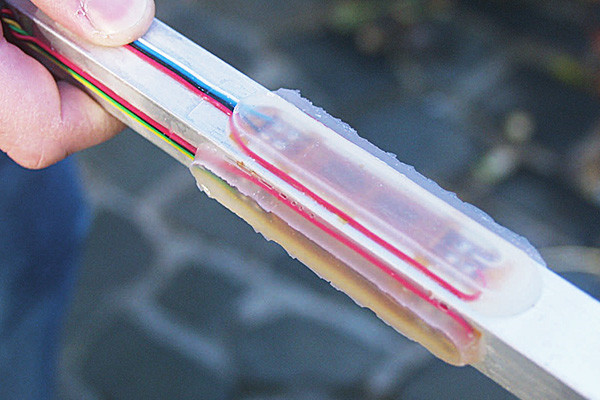
Understanding Waterproof Potting Compounds:
- Waterproof potting compounds are typically epoxy or silicone-based materials.
- They provide a protective layer around electronic components, safeguarding them from moisture, dust, and mechanical stresses.
- These compounds offer excellent adhesion to substrates, ensuring long-term protection and reliability.
- They are widely used in electronics, automotive, aerospace, and marine applications.
Can They Be Removed?
- Removing waterproof potting compounds can be challenging due to their strong adhesion and resistance to solvents.
- Scraping and sanding are mechanical techniques that can harm substrates and components.
- Chemical solvents can sometimes soften the compound, but complete removal is often impractical and may harm sensitive electronics.
Reworking Waterproof Potting Compounds:
- While complete removal is difficult, reworking is possible.
- Heating the assembly can soften the compound, allowing for partial removal or modification.
- Specialized tools and techniques such as hot air guns or infrared heating are employed for controlled reworking.
- Care must be taken to avoid damaging or affecting the components’ functionality during rework processes.
Limitations and Considerations:
- The effectiveness of removal or reworking depends on the type of potting compound used and the specific application.
- Reworking may compromise the original waterproofing integrity, necessitating additional protective measures.
- When trying removal or rework, weighing the benefits and dangers is critical, considering the significance of component performance and reliability.
Are there any environmental considerations associated with waterproof potting compounds?
In electronics and electrical systems, protecting components from moisture and environmental factors is paramount. Waterproof potting compounds play a crucial role in achieving this goal, providing insulation and sealing against water, dust, and other contaminants. However, as with any chemical product, environmental considerations accompany their use.
What are Waterproof Potting Compounds?
- Waterproof potting compounds, such as circuit boards and sensors, encapsulate electronic components to protect them from moisture, humidity, and other environmental hazards.
- They are typically made from polymers such as epoxies, silicones, and urethanes, which form a protective barrier around the components once cured.
Environmental Considerations:
- Chemical Composition:While effective in protecting electronics, some waterproof potting compounds contain chemicals that can harm the environment. These may include volatile organic compounds (VOCs), solvents, and additives like plasticizers and flame retardants.
- Disposal:Improper disposal of electronic waste containing waterproof potting compounds can lead to harmful chemicals leaching into soil and water sources, posing risks to ecosystems and human health.
- End-of-Life Management:The challenge lies in managing the end-of-life phase of electronic devices encapsulated with waterproof potting compounds. Disassembly and recycling become more complex due to the need to separate and properly dispose of the potting materials.
- Alternative Materials:Researchers and manufacturers actively explore environmentally friendly alternatives to traditional potting compounds. Bio-based polymers, recyclable materials, and low-impact formulations are being developed to reduce the environmental footprint of encapsulation processes.
- Regulatory Compliance:The use of chemicals, particularly potting compounds, in electronic equipment is governed by environmental rules such as RoHS (Restriction of Hazardous Substances) and REACH (Registration, Evaluation, Authorization, and Restriction of Chemicals). Compliance with these regulations is essential for mitigating environmental impacts.
Balancing Performance and Sustainability:
Green Certification:Some companies offer eco-friendly potting compounds certified by third-party organizations, indicating compliance with stringent environmental standards.
- Education and Awareness:Educating stakeholders about the environmental implications of waterproof potting compounds fosters greater awareness and encourages responsible usage and disposal practices.
What role do waterproof potting compounds play in preventing corrosion?
In electronics, safeguarding delicate components against environmental hazards is paramount. Waterproof potting compounds are one of the most effective methods to ensure longevity and reliability. These compounds serve as a protective shield, preventing corrosion and damage caused by moisture infiltration. Let’s delve deeper into the role these compounds play in safeguarding electronics:
Sealing Against Moisture:
- Waterproof potting compounds are a barrier, sealing electronic components against moisture infiltration.
- They encapsulate sensitive parts, such as circuit boards and wires, shielding them from exposure to water and humidity.
- This sealing prevents corrosion, which can lead to malfunctions and, ultimately, the failure of electronic devices.
Corrosion Prevention:
- Moisture is a common cause of corrosion in electronic components, leading to rust and degradation of materials.
- The protective layer created by waterproof potting chemicals prevents rust and other corrosive byproducts from forming.
- By preventing corrosion, these compounds extend the lifespan of electronics, reducing the need for frequent repairs or replacements.
Enhanced Durability:
- The application of waterproof potting compounds significantly enhances the durability of electronic devices.
- Parts potted with these substances are more resilient to abrasive environments, such as exposure to chemicals, water, and dust.
- This durability is particularly crucial in outdoor electronics, automotive systems, and marine equipment applications, where exposure to moisture is inevitable.
Improved Reliability:
- Reliability is crucial in electronics, especially in critical systems where failure can have serious consequences.
- Waterproof potting compounds contribute to improved reliability by safeguarding components against moisture-induced failures.
- Electronics potted with these compounds are less susceptible to short circuits, electrical leakage, and other issues triggered by moisture ingress.
Versatile Applications:
- Waterproof potting compounds find applications across various industries, including aerospace, telecommunications, and industrial manufacturing.
- They are used in various electronic devices, from consumer gadgets to sophisticated machinery.
- Their versatility makes them indispensable for protecting electronics indoors and outdoors.
Are waterproof potting compounds compatible with different substrates?
Waterproof potting compounds protect electronic components from environmental hazards such as moisture, dust, and vibrations. However, ensuring compatibility with various substrates is crucial for optimal performance and longevity. Let’s delve into the factors influencing compatibility and how to choose the suitable potting compound for different substrates.
Understanding Waterproof Potting Compounds:
- Waterproof potting compounds are specialized materials that encapsulate electronic components, providing a protective barrier against moisture, chemicals, and physical damage.
- They are commonly epoxy or silicone-based and are designed to adhere to different substrates while offering excellent resistance to environmental stressors.
- These compounds are used across diverse industries, including electronics, automotive, aerospace, and marine applications.
Factors Affecting Compatibility:
- Chemical Composition:The chemical makeup of the potting compound determines its compatibility with specific substrates. Epoxy-based compounds adhere well to metals, ceramics, and most plastics, while silicone-based compounds offer superior flexibility and adhesion to a broader range of materials.
- Surface Preparation:Thorough surface preparation is necessary to promote adhesion between the potting compound and the substrate. Surfaces must be free of impurities like oils, greases, or oxides and dry and clean.
- Thermal Expansion Coefficient:Matching the thermal expansion coefficient of the potting compound with that of the substrate helps prevent stress-induced cracking or delamination, especially during temperature fluctuations.
- Mechanical Properties:Consideration of mechanical properties such as hardness, flexibility, and elongation is crucial to ensure compatibility with the substrate’s characteristics and the intended application requirements.
Choosing the Right Potting Compound:
- Assess the substrate material’s properties, including composition, surface roughness, and thermal characteristics.
- Select a potting compound with a formulation optimized for compatibility with the specific substrate and environmental conditions.
- Conduct compatibility testing to evaluate adhesion, thermal stability, and mechanical performance before full-scale application.
How do temperature extremes affect the performance of waterproof potting compounds?
Waterproof potting compounds serve as the frontline defense for electronic components, shielding them from moisture, dust, and mechanical stress. However, temperature extremes are a crucial issue that can significantly impact their performance. Comprehending the impact of temperature variations on these substances is essential to guaranteeing the dependability and durability of enclosed electronic components.
Extreme hot or cold temperatures can pose significant challenges for waterproof potting compounds. The compound may soften at high temperatures, losing its stickiness and mechanical strength. On the other hand, low temperatures can make the compound brittle, which raises the possibility of delamination or breaking.
In hot environments, such as industrial settings or automotive engine compartments, waterproof potting compounds may be subjected to temperatures well above their specified operating range. Prolonged exposure to elevated temperatures can accelerate the compound’s aging process, degrading its mechanical and electrical properties. This degradation compromises the seal’s effectiveness and increases the risk of damage to encapsulated electronics.
Similarly, in cold environments, such as outdoor installations or aerospace applications, waterproof potting compounds must withstand sub-zero temperatures without sacrificing performance. Freezing temperatures can cause the compound to contract, stressing the encapsulated electronics and potentially leading to cracks or voids in the seal. Additionally, repeated cycles of freezing and thawing can further exacerbate the degradation of the compound over time.
Engineers employ various strategies to mitigate the effects of temperature extremes on waterproof potting compounds. One approach is to select potting compounds with a wide operating temperature range, capable of withstanding both high and low temperatures without significant degradation. Additionally, incorporating additives such as fillers or reinforcements can enhance the compound’s thermal stability and mechanical strength.
Proper application and curing procedures are also crucial for ensuring the resilience of waterproof potting compounds in extreme temperatures. Ensuring thorough mixing and adequate curing time allows the compound to achieve maximum strength and adhesion, improving its performance under challenging environmental conditions.
Furthermore, thermal management techniques, such as heat sinks or thermal interface materials, can help dissipate excess heat generated by electronic components, reducing the temperature stress on the potting compound. Similarly, insulation materials can help maintain stable temperatures in cold environments, minimizing the risk of thermal cycling-induced damage.
What advancements are being made in waterproof potting compound technology?
Advanced techniques for safeguarding electrical components are becoming increasingly necessary as technology advances rapidly. Waterproof potting compounds, long heralded for their ability to shield sensitive parts from moisture and environmental hazards, are undergoing significant advancements to meet the growing demands of various industries. Let’s explore the latest innovations in waterproof potting compound technology:
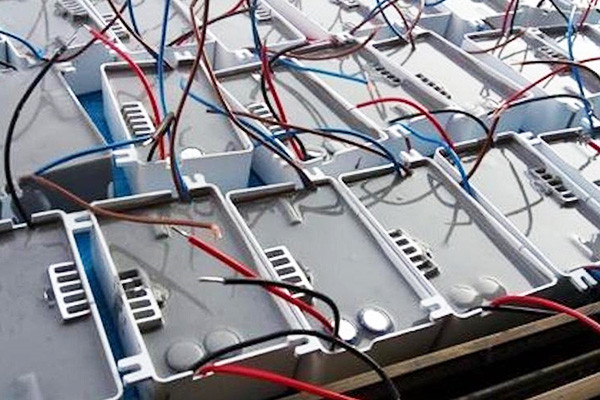
Nanotechnology Integration:
- The integration of nanotechnology has revolutionized waterproof potting compounds, enabling the creation of ultra-thin protective coatings with superior barrier properties.
- Nanoparticles enhance the compound’s ability to repel water and block moisture infiltration at the molecular level, significantly improving its effectiveness in harsh environments.
Self-Healing Properties:
- Advancements in material science have led to the development of waterproof potting compounds with self-healing properties.
- These compounds can autonomously repair minor damages, such as cracks or scratches, thereby maintaining their integrity and protective capabilities over extended periods.
Enhanced Thermal Conductivity:
- Modern waterproof potting compounds are engineered with enhanced thermal conductivity to address the challenge of heat dissipation in enclosed electronic systems.
- Improved heat transfer properties ensure efficient dissipation of heat generated by electronic components, thus preventing overheating and preserving device performance and reliability.
Eco-Friendly Formulations:
- With increasing emphasis on sustainability, manufacturers are developing eco-friendly formulations for waterproof potting compounds.
- These formulations utilize biodegradable materials or recycled components, reducing environmental impact without compromising performance or durability.
Compatibility with Advanced Electronics:
- As electronics become more compact and complex, waterproof potting compounds are being formulated to be compatible with a broader range of materials and components.
- These compounds can accommodate advanced electronic assemblies, including microchips, sensors, and flexible circuits, without compromising functionality or reliability.
Customizable Properties:
- The latest waterproof potting compounds offer customizable properties to meet specific application requirements.
- Manufacturers can tailor factors such as viscosity, curing time, and mechanical strength to suit the unique needs of diverse industries and environments.
IoT Integration:
- Waterproof potting compounds are being developed to facilitate seamless integration with linked systems in response to the widespread use of Internet of Things (IoT) devices.
- These compounds provide robust protection for IoT sensors, controllers, and communication modules, ensuring uninterrupted performance in outdoor and industrial settings.
Can waterproof potting compounds improve product reliability in rugged environments?
Reliability is paramount in electronics and electrical engineering, especially in rugged environments. One key element in ensuring the longevity and durability of electronic devices is the effective use of waterproof potting compounds. These compounds safeguard sensitive components from moisture, dust, vibrations, and other environmental stresses. But can waterproof potting compounds truly enhance product reliability in such demanding conditions? Let’s delve deeper into this question.
- Understanding Waterproof Potting Compounds: Waterproof potting compounds are specialized materials that encapsulate electronic components, protecting against moisture ingress and other environmental factors. Typically made from epoxy, silicone, or polyurethane, these compounds create a robust barrier around sensitive parts, shielding them from water, chemicals, and physical damage.
- The Importance of Reliability in Rugged Environments: Electronic devices are subjected to harsh conditions in rugged environments, including extreme temperatures, moisture, and mechanical shocks. Maintaining reliability under such circumstances is challenging but crucial, especially in applications like automotive, aerospace, and industrial equipment, where failure can have serious consequences.
- Enhanced Protection Against Moisture: Moisture is one of the primary threats to electronic components, causing corrosion, short circuits, and malfunctioning. Waterproof potting compounds act as a protective shield, preventing water penetration and safeguarding the integrity of sensitive electronics, even in wet or humid conditions.
- Mechanical Stability and Vibration Resistance: In addition to moisture protection, waterproof potting compounds offer excellent mechanical stability and vibration resistance. By securely encapsulating components, these compounds prevent displacement and damage caused by mechanical shocks and vibrations, ensuring the longevity of electronic devices in rugged environments.
- Improved Thermal Management: Many waterproof potting compounds also possess excellent thermal conductivity properties, aiding in efficient heat dissipation. Effective thermal management is crucial in rugged environments where temperature fluctuations are expected to prevent overheating and thermal stress on electronic components.
- Versatility and Customization: One notable advantage of waterproof potting compounds is their versatility and customization options. Engineers can tailor the properties of these compounds to meet specific application requirements, including desired levels of flexibility, hardness, and chemical resistance, ensuring optimal performance in diverse, rugged environments.
How do manufacturers ensure the quality and consistency of waterproof potting compounds?
Waterproof potting compounds protect electronic components against moisture, corrosion, and other environmental factors in various industries. Ensuring their quality and consistency is paramount for manufacturers to uphold reliability and performance standards. Here’s how manufacturers achieve this:
Precise Formulation:
- Manufacturers meticulously formulate waterproof potting compounds, considering specific requirements such as environmental conditions, material compatibility, and application needs.
- They utilize advanced materials science and engineering principles to develop formulations that offer optimal protection without compromising performance.
Stringent Testing Protocols:
- Before production, manufacturers subject raw materials to comprehensive testing to verify their quality and suitability for use in potting compounds.
- Strict quality control measures are utilized throughout manufacturing to monitor uniformity and spot deviations from predefined guidelines.
- Finished potting compounds undergo thorough testing to assess properties like waterproofing effectiveness, adhesion strength, thermal stability, and electrical insulation.
Advanced Manufacturing Techniques:
- Manufacturers employ advanced equipment and techniques to ensure precise mixing, homogenization, and dispensing of potting compounds.
- Automated processes minimize human error and enhance repeatability, contributing to consistent product quality.
Continuous Improvement Initiatives:
- Manufacturers prioritize continuous improvement initiatives to refine formulations, optimize production processes, and enhance product performance.
- Feedback from customers and field testing data are valuable sources of information used to drive innovation and address emerging challenges.
Compliance with Industry Standards:
- Manufacturers adhere to relevant industry standards and regulations governing the production and use of waterproof potting compounds.
- Compliance ensures that products meet safety, environmental, and performance requirements, instilling customer and end-user confidence.
Traceability and Documentation:
- Comprehensive documentation accompanies each batch of waterproof potting compounds, detailing ingredients, manufacturing processes, and test results.
- Traceability enables manufacturers to track products throughout their lifecycle, facilitating quality control and post-market surveillance efforts.
Collaboration with Customers:
- Manufacturers collaborate closely with customers to understand their requirements and challenges, tailoring solutions accordingly.
- This partnership approach fosters innovation and enables manufacturers to develop customized potting compounds that address unique application needs.
What are some best practices for handling and applying waterproof potting compounds?
Waterproof potting chemicals shield electrical parts from environmental risks, including moisture and corrosion. These chemicals must be applied and appropriately handled so that electronic gadgets operate at their best and last long. Here are some best practices to follow:
Preparation:
- Before starting the potting process, ensure the work area is clean, dry, and well-ventilated.
- Gather all necessary equipment and materials, including the potting compound, mixing tools, and safety gear, such as gloves and goggles.
Selecting the Right Compound:
- Choose a waterproof potting compound compatible with the potted materials and the environmental conditions the device will encounter.
- Consider elements like temperature resistance, flexibility, and cure time when choosing the compound.
Mixing:
- Follow the manufacturer’s instructions carefully when mixing the potting compound.
- Use precise measurements to achieve the correct ratio of resin to hardener, ensuring proper curing and performance.
Application:
- Apply the potting compound evenly to the electronic components, ensuring complete coverage and encapsulation.
- Use a brush, syringe, or pouring method depending on the size and complexity of the potted components.
- Avoid trapping air bubbles during application, as they can compromise the integrity of the potting.
Curing:
- Allow sufficient time for the potting compound to cure according to the manufacturer’s recommendations.
- Maintain the appropriate temperature and humidity conditions to facilitate proper curing.
- Avoid disturbing or moving the potted components during curing to prevent defects.
Quality Control:
- Inspect the potted components after curing to ensure the potting compound fully encapsulates the electronics.
- Check for any voids, cracks, or other defects that may compromise the waterproofing properties of the potting.
Storage and Handling:
- To avoid contamination or early curing, store leftover potting compounds in a sealed container in a cold, dry location.
- Handle potted components carefully to avoid mechanical stress or impact that could damage the potting.
Safety Precautions:
- When handling potting compounds, wear appropriate personal protective equipment, such as gloves and safety glasses.
- Follow proper disposal procedures for unused or expired potting compounds according to local regulations.
Conclusion
Waterproof potting compounds stand as indispensable guardians of electronic integrity, offering unparalleled protection against the elements. As technology advances and demands for reliability grow, understanding the nuances of these compounds becomes imperative. By unraveling the mysteries surrounding waterproof potting compounds, businesses can fortify their products against environmental challenges, ensuring longevity and performance excellence.
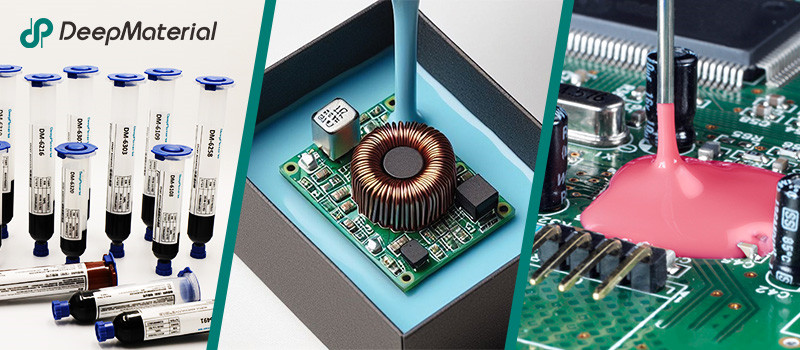
About DeepMaterial
DeepMaterial is a trusted supplier of encapsulant materials that are used in electronics manufacturing worldwide. From chip on board encapsulants such as glob top material to conformal coatings, underfills, low pressure molding, and potting solutions, DeepMaterial offers a full range of circuit board protection materials that effectively protect circuit boards while help reduce costs. More…Deepmaterial is a the manufacturer of epoxy adhesives including hardeners, metalbond, and metal filled resins. Structural, toughened medium viscosity, and non-sag adhesives are also offered. Some adhesives are resistant to thermal shock, chemical, vibration dampening, and impact. Suitable for metals, plastics, wood, and ceramics. Serves electronics, aerospace, automotive, tooling, marine, and construction industries. REACH and RoHS compliant. FDA approved. UL listed. Meets military specifications. We are the one of best adhesive manufacturers in China.
Blogs & News
Potting compounds are at the frontline of electronics assembly, delivering effective protection in challenging environmental conditions while improving mechanical strength and offering high electric insulation. Used within a variety of industries, electrical potting compounds are found within a broad range of consumer electronics, as well as used in applications across the automotive, aerospace, and other industries where electronic assemblies are prevalent.
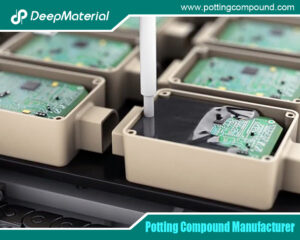
The Comprehensive Guide to Polyurethane Potting Compound Manufacturers
The Comprehensive Guide to Polyurethane Potting Compound Manufacturers In today’s rapidly advancing technological landscape, the protection and reliability of electronic components have become paramount.
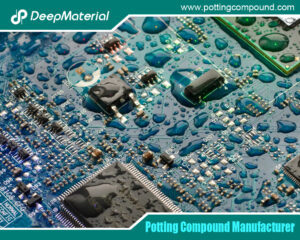
The Comprehensive Guide to Epoxy Potting Compound Manufacturers
The Comprehensive Guide to Epoxy Potting Compound Manufacturers Epoxy potting compounds are essential materials in the electronics industry, providing robust protection for sensitive components against
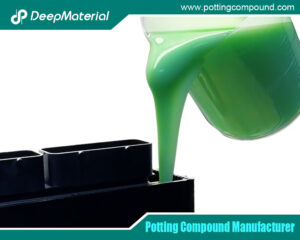
The Essential Guide to Potting Materials for Electronics
The Essential Guide to Potting Materials for Electronics In the rapidly evolving field of electronics, ensuring device reliability and longevity is critical. One of the
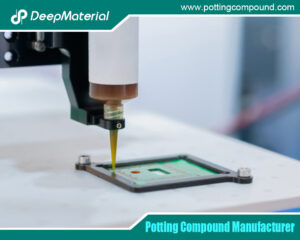
The Expanding Horizon of the Mini Silicone Optical Glue Market
The Expanding Horizon of the Mini Silicone Optical Glue Market The mini silicone optical glue market is witnessing unprecedented growth, fueled by technological advancements and
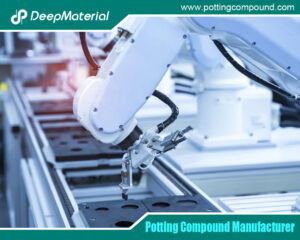
The Comprehensive Guide to PCB Potting Services: Ensuring Reliability in Electronics
The Comprehensive Guide to PCB Potting Services: Ensuring Reliability in Electronics Printed Circuit Boards (PCBs) are the backbone of modern electronics, enabling functionality in
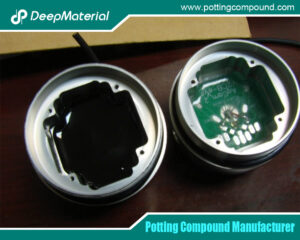
Comprehensive Insights on PCB Encapsulation in Potting Material
Comprehensive Insights on PCB Encapsulation in Potting Material In the fast-evolving landscape of electronics, ensuring the durability, reliability, and longevity of printed circuit boards

